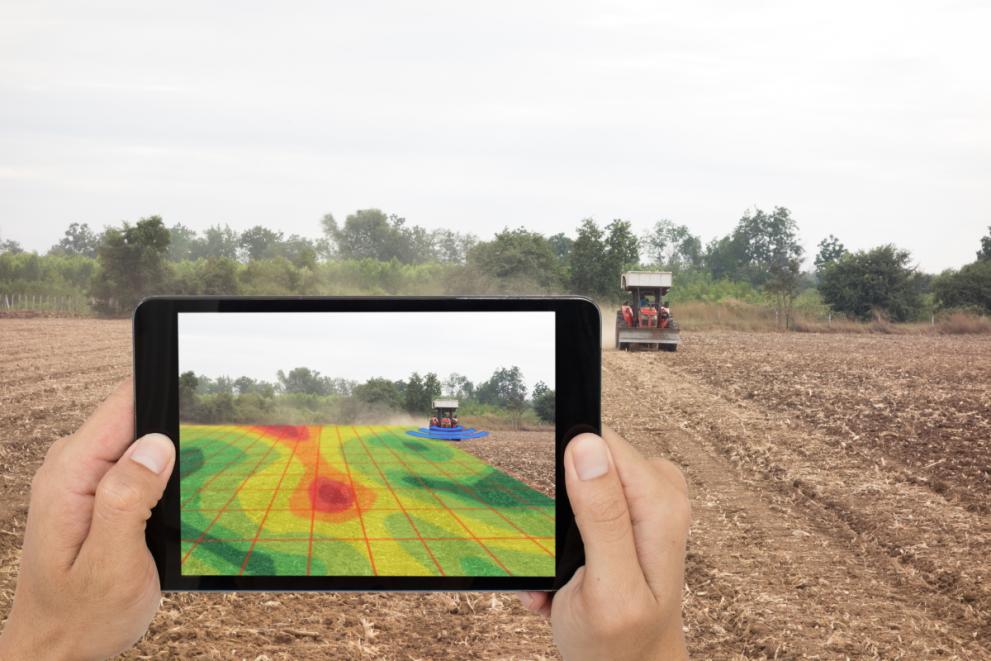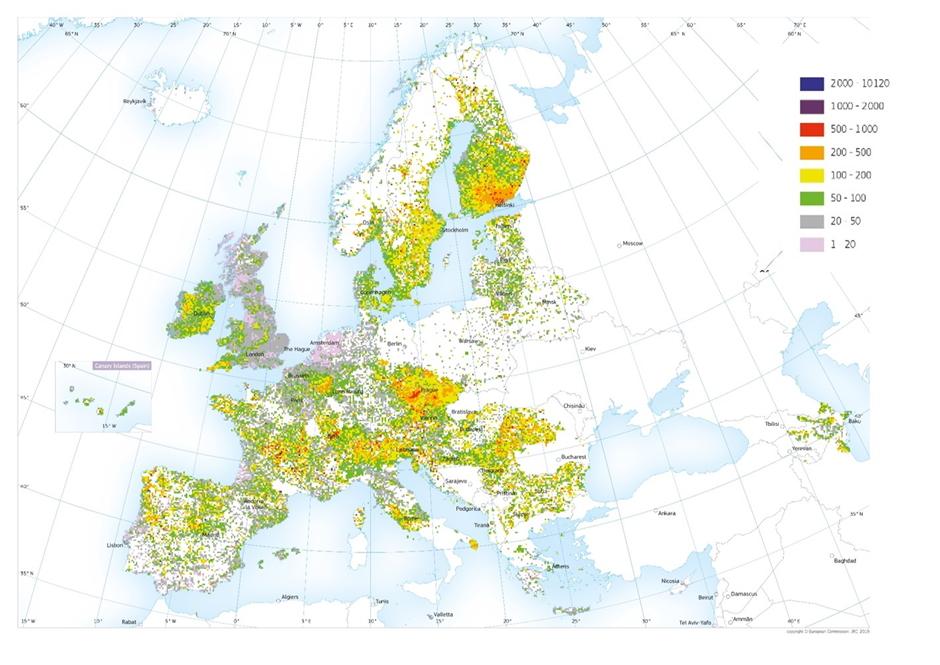
The European Atlas of Natural Radiation provides harmonised data on levels of natural radiation across the EU and aims to raise awareness among Europeans of living with natural radioactivity.
The human population is continuously exposed to ionising radiation from several natural sources that can be classified into two broad categories: high-energy cosmic rays and radioactive nuclides that originated in the earth's crust and are present everywhere in the environment.
In normal circumstances, radon is the most important contributor to the radiation exposure of the human population.
Radon is a naturally occurring radioactive gas. It has no smell, colour or taste.
It is formed by the decay of small amounts of uranium in rocks and soils. The gas can also be present in water and some building materials.
Depending on the type of underground soil, building materials and water, high levels of radon can accumulate in some homes.
Even in the same geographical area, the radon concentrations can be very different from one home to another.
Radon can seep into a house through cracks in the floors, construction joints, cracks in the walls as well as the piping.
Although the gas occurs naturally and is found in low levels throughout the EU, higher levels of radon put people at greater risk of developing lung cancer.
Radon is the second cause of lung cancer after smoking, and the leading cause of lung cancer among people who have never smoked.
A combination of smoking and indoor radon gas further increases the cancer risk.
European Atlas of Natural Radiation: an Encyclopedia of natural radioactivity
The European Atlas of Natural Radiation published by the JRC provides reference values for natural sources of radiation across the EU and makes harmonised datasets available to the scientific community and national authorities.
The Atlas is a result of the JRC’s collaboration with over 60 institutions, including universities, research centres, national and European authorities, and international organisations.
"We intend the Atlas to be seen as an encyclopedia of natural radioactivity. It describes the different sources of natural radioactivity in different parts of Europe. It represents the current state-of-the art of the knowledge on this topic", explains JRC scientist Giorgia Cinelli.
The Atlas also contains a collection of maps showing the levels of natural sources of radiation in different parts of Europe.

"We would also like people to use this Atlas to become more familiar with natural radioactivity. We are all exposed to radiation from natural sources. Most of the time the levels do not exceed what would be considered safe for human health, but in some geographical areas the natural radioactivity sources could result into health risks", Giorgia explains.
On the JRC’s radioactivity monitoring website, users can download the publication or navigate the online version zooming in to their own area and check the levels of different types of radiation
Monitoring environmental radioactivity in the EU
EU Member States are responsible for monitoring the levels of radioactivity in the environment.
Under the Euratom Treaty, the European Commission is mandated to collect, verify and report information on radioactivity levels in the EU Member States.
The JRC operates and maintains the Radioactivity Environmental Monitoring database, which contains the monitoring data provided by the EU Member States on an annual basis.
The Council Directive 2013/59/EURATOM introduced legally binding requirements on the protection from exposure to natural radiation sources and, in particular, to radon.
The Directive requires Member States to establish national action plans to address the long term risks from radon.
To receive further information about radon in your own area and guidance on reducing radon levels in buildings, please contact your national authority responsible for radiation protection.
Related Content
Website: European Atlas of Natural Radiation
JRC report: European Atlas of Natural Radiation
Details
- Publication date
- 16 July 2020
